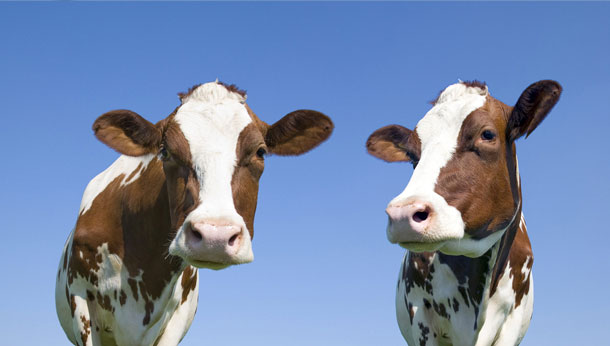
The disease can occur in dairy cows, particularly where supplemented during the dry period. Despite its vital role in the body there are no specific mechanisms to control magnesium levels. The concentration of magnesium in the body is dependent on absorption from the rumen, how readily it is excreted by the kidneys and how much is sequestered for milk production.
Dietary Magnesium
The availability of dietary magnesium varies considerably according to grazing conditions, geography, soil type and pasture management.
High levels of potassium caused by the application of potash fertilisers disrupt the absorption of magnesium.
Clinical Signs
Lactating beef cows around 4-8 weeks after calving are often found dead with disturbed soil around its feet (indicative of seizure activity/paddling).
Where the animal is found alive it usually displays excitability, high head carriage, muscle twitching, ataxia (a ‘staggering’ gait) and hyperaesthesia (very sensitive to noise and touch).
Cattle can also grind their teeth and show an exaggerated blink reflex. These clinical signs progress rapidly to seizure activity, recumbancy, paddling and death.
Some of the group may show subclinical disease. These cows may be nervous, show reluctance to be driven and have depressed dry matter intake.
Diagnosis
This is based mostly on clinical signs, inclement weather, grazing conditions, herd history and response to treatment. Grass staggers can be diagnosed based on blood samples run on in-house lab machines.
In cases of sudden death, samples taken from the eye (aqueous humour) can be tested for magnesium levels.
Treatment
It is essential to call us immediately if you suspect grass staggers. We can administer drugs to control seizure activity and begin intravenous treatment.
Whilst you wait for us to visit after calling, administer 400mls of calcium borogluconate containing 40% calcium and 5% magnesium under the skin.
Under no circumstances give magnesium directly into the vein as this will result in the death of the animal you are attempting to treat.
Prevention/control measures
The total diet should contain 2.5g/kg DM of magnesium to meet the requirements of lactating cows at pasture.
Magnesium chloride can be added to the drinking water however, it is relatively unpalatable so you need to make sure it is well mixed and make sure it doesn’t become too concentrated.
On wet days, cows may ingest most of their water from the pasture and take in less from the treated water trough. Intra-ruminal boluses give a prolonged release of magnesium over a period of four weeks and can be used prior to periods of risk (spring/autumn when pasture will be lush and relatively low in fibre). Pasture can be dusted with magnesium oxide. Powder should be applied early in the morning and the pasture should be strip-grazed throughout the week. Give us a call to discuss what will work best for you and your herd.
Slurry is high in potash so, early doses on grazing can exaggerate the potential risk. It is also recommended that you avoid potash application in the spring as this can lead to ‘easy’ uptake by the plant, offsetting the magnesium level in the rapidly growing grass plant.
If you have any concerns or want to discuss protecting your herd, give us a call for a chat.